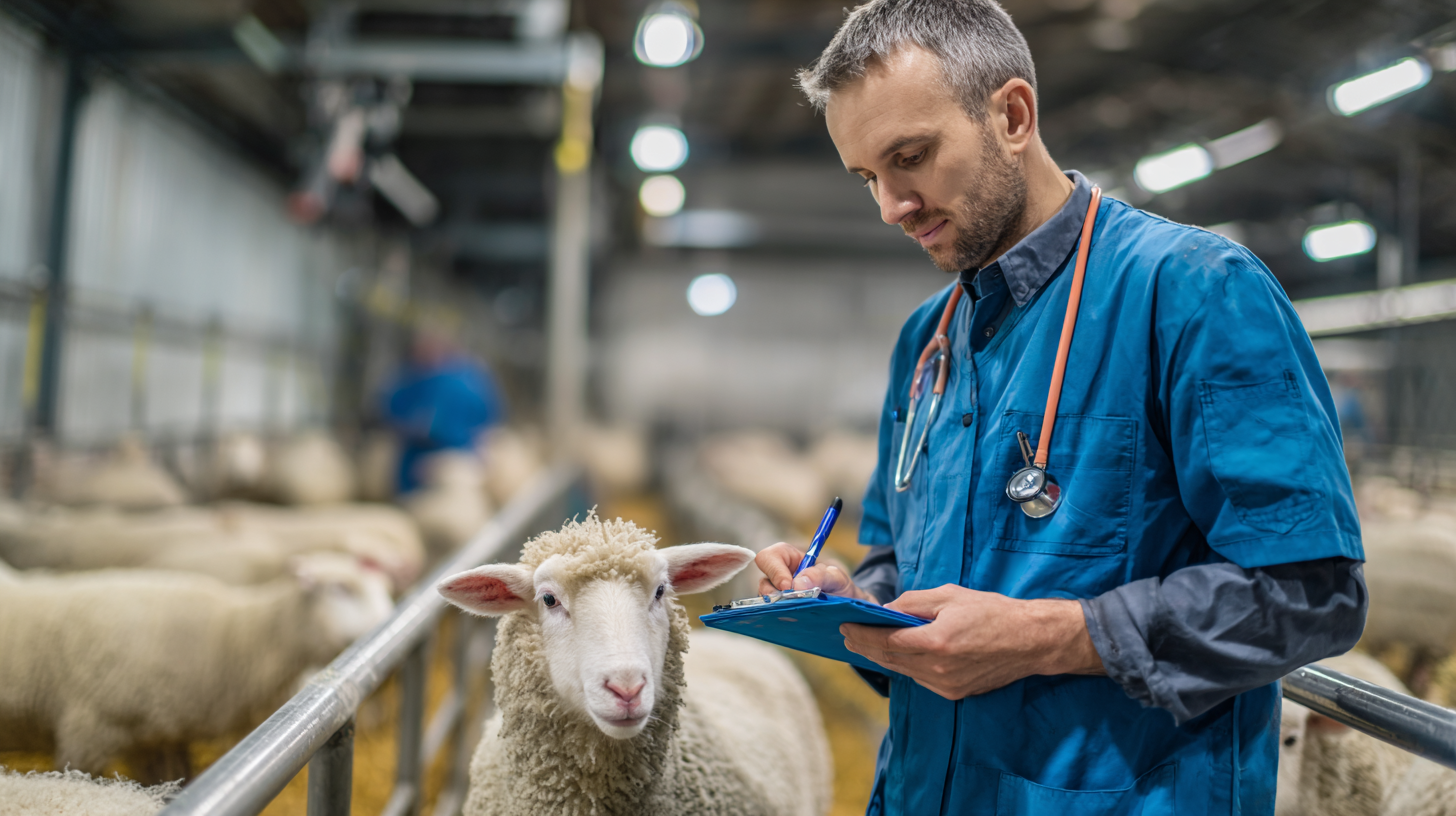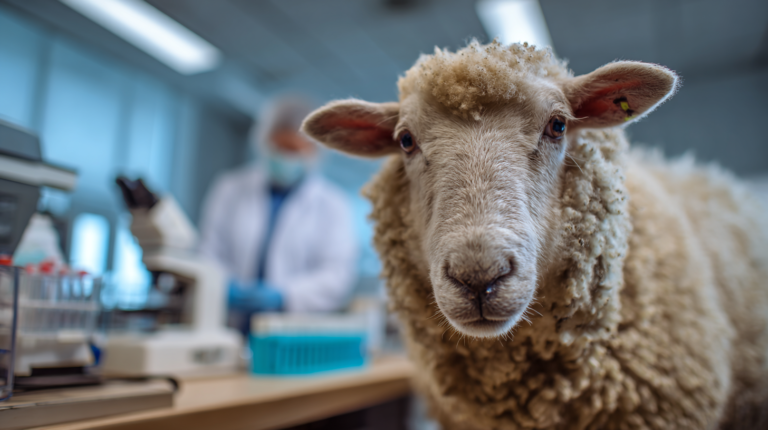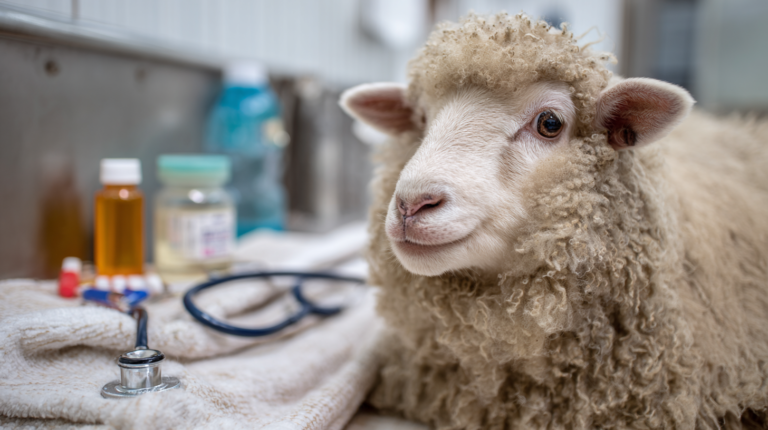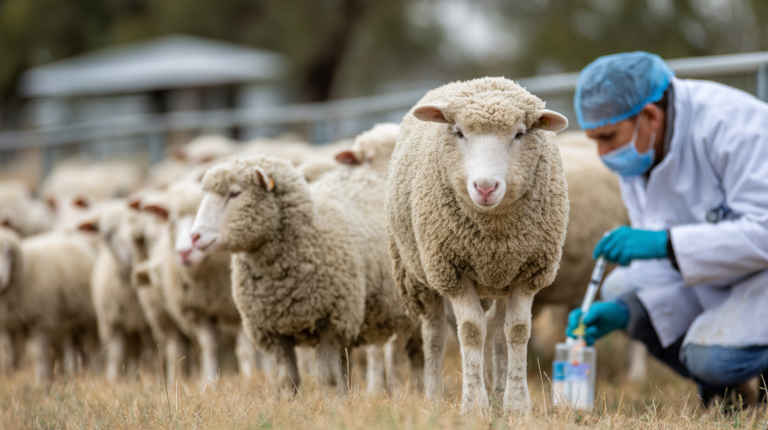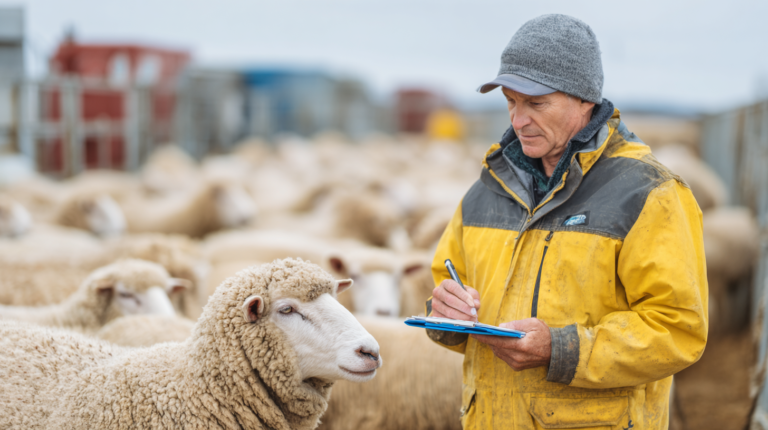Discover the 4 critical warning signs of mastitis in sheep and learn expert-backed prevention and treatment strategies to protect your flock’s health and productivity.
Table of Contents
Mastitis in sheep represents one of the most significant health challenges facing sheep farmers and small-scale livestock owners worldwide. This painful udder infection not only threatens the immediate welfare of your animals but can also devastate milk production, compromise lamb survival rates, and result in substantial economic losses. Understanding the early warning signs and implementing proper management strategies can mean the difference between a minor health issue and a flock-wide crisis.
Whether you’re a seasoned sheep farmer or someone considering adding sheep to your small farm, recognizing mastitis symptoms and knowing how to respond effectively is crucial for maintaining healthy, productive animals. This comprehensive guide will walk you through the four most critical warning signs of mastitis in sheep, provide evidence-based treatment approaches, and offer practical prevention strategies that veterinary professionals recommend.
Understanding Mastitis in Sheep:
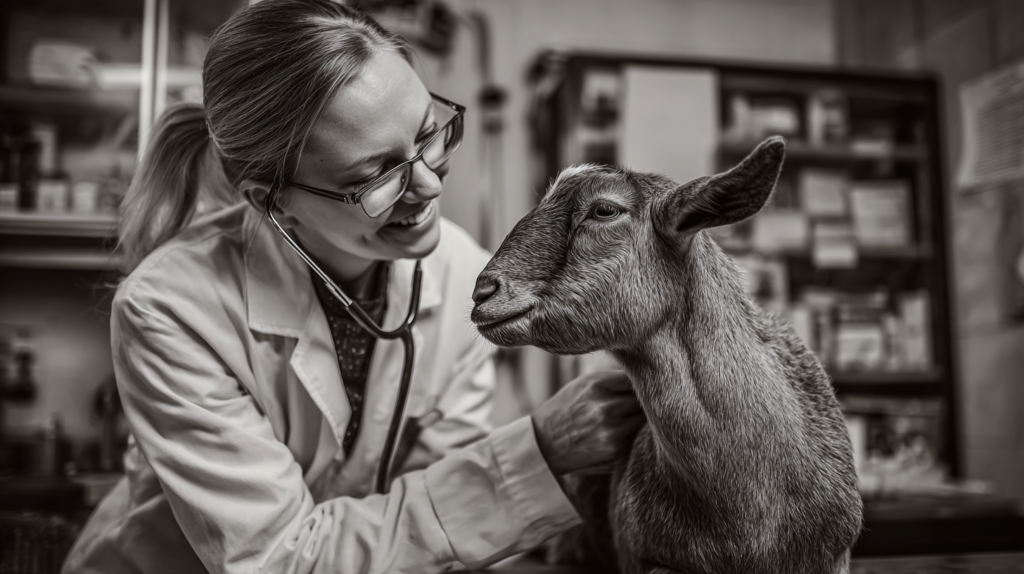
Mastitis in sheep is an inflammatory condition affecting the mammary glands, typically caused by bacterial infections that enter through the teat canal. Unlike cattle mastitis, which receives considerable attention in dairy operations, sheep mastitis often goes undetected until it reaches advanced stages, making early recognition absolutely essential for successful treatment outcomes.
The condition primarily affects ewes during lactation, though it can occasionally occur in dry ewes or even young females. According to recent veterinary studies, mastitis affects approximately 5-10% of lactating ewes in well-managed flocks, but this percentage can skyrocket to 30% or higher in operations with poor hygiene or inadequate management practices.
The economic impact extends far beyond treatment costs. Affected ewes may lose partial or complete milk production, leading to poor lamb growth rates, increased mortality, and reduced weaning weights. In severe cases, the infection can become systemic, potentially resulting in the loss of valuable breeding stock.
The Bacterial Culprits Behind Sheep Mastitis
The most common bacterial pathogens responsible for mastitis in sheep include Staphylococcus aureus, Streptococcus species, and Pasteurella haemolytica. Each pathogen presents unique challenges and may require different treatment approaches. Environmental factors, stress, poor nutrition, and compromised immune systems all contribute to increased susceptibility.
Research conducted by veterinary microbiologists has shown that Staphylococcus aureus causes the most persistent and difficult-to-treat infections, often resulting in chronic mastitis that can plague a ewe for multiple breeding seasons. Understanding these bacterial differences helps inform both treatment decisions and prevention strategies.
| Warning Sign | Description | Severity Level | Action Required |
|---|---|---|---|
| Udder Swelling | Hard, hot, and swollen mammary glands, often asymmetrical | Critical | Immediate veterinary assessment and treatment initiation |
| Abnormal Milk | Clots, blood, watery consistency, or discolored milk | Critical | Stop milking affected quarter, collect sample for testing |
| Behavioral Changes | Lethargy, loss of appetite, reluctance to move or nurse | Moderate | Monitor closely, prepare for veterinary consultation |
| Temperature Changes | Fever above 103°F (39.4°C) or hypothermia below 100°F | Critical | Emergency veterinary intervention required |
| Reduced Milk Production | Sudden decrease in milk yield from affected quarters | Moderate | Document changes, implement supportive care measures |
| Lamb Rejection | Ewe avoiding nursing or showing aggression toward lambs | Monitor | Ensure lamb nutrition, investigate underlying causes |
The 4 Critical Warning Signs of Mastitis in Sheep
1. Visible Udder Changes: The Most Obvious Red Flag
The first and most recognizable sign of mastitis in sheep involves visible changes to the udder itself. Healthy sheep udders should feel soft, pliable, and uniform in temperature. When mastitis develops, affected areas become hard, hot, and noticeably swollen.
Look for asymmetry between the two halves of the udder, as mastitis often affects one side more severely than the other. The skin may appear red or discolored, and you might notice unusual firmness or lumps within the mammary tissue. In acute cases, the udder may feel burning hot to the touch and appear significantly enlarged.
What to feel for during examination:
- Unusual hardness or firmness in mammary tissue
- Heat radiating from the affected area
- Swelling that doesn’t subside after normal milking or nursing
- Lumps or nodules within the udder
- Skin discoloration ranging from pink to deep red
Veterinary professionals recommend conducting daily udder checks during high-risk periods, particularly during the first few weeks of lactation when mastitis incidence peaks. Early detection during this stage often allows for more effective treatment and better outcomes.
2. Abnormal Milk Appearance and Consistency
Changes in milk appearance represent one of the most diagnostic signs of mastitis in sheep. Normal sheep milk should appear creamy white with a smooth, consistent texture. When mastitis develops, the milk undergoes dramatic changes that are usually visible to the naked eye.
Infected milk may contain clots, appear watery or yellowish, or show signs of blood contamination. In severe cases, the milk may appear thick and purulent, containing obvious pus or inflammatory material. Some mastitis cases produce milk with a stringy or ropy consistency that’s immediately recognizable as abnormal.
Specific milk changes to monitor:
- Clots or chunks in the milk stream
- Watery, thin consistency instead of normal creamy texture
- Yellow, green, or blood-tinged discoloration
- Foul or unusual odor
- Reduced milk volume from affected quarters
The California Mastitis Test (CMT) provides a simple, farmside method for detecting subclinical mastitis before visible symptoms appear. This test measures somatic cell counts in milk, providing early warning of developing infections even when milk appears normal to the naked eye.
3. Behavioral Changes and Signs of Discomfort
Sheep experiencing mastitis often exhibit distinct behavioral changes that alert observant caretakers to potential problems. These animals may become reluctant to allow lambs to nurse, showing signs of pain or discomfort when the udder is touched or stimulated.
Affected ewes frequently display a characteristic wide-legged stance while standing, attempting to reduce pressure on the inflamed mammary glands. They may also show general signs of illness including reduced appetite, lethargy, and separation from the flock. In severe cases, ewes may develop fever and show obvious signs of systemic illness.
Behavioral indicators include:
- Reluctance to allow lambs to nurse
- Kicking or moving away when lambs attempt to suckle
- Standing with legs positioned wider than normal
- Reduced activity and appetite
- Isolation from other flock members
- General appearance of illness or depression
Experienced sheep handlers often notice these behavioral changes before physical symptoms become apparent, emphasizing the importance of daily observation and understanding normal flock behavior patterns.
4. Lamb Performance and Development Issues
The fourth critical clue often manifests in the lambs themselves rather than the affected ewe. Lambs nursing from ewes with mastitis frequently show poor growth rates, appear thin or underdeveloped, and may exhibit signs of hunger or frustration during nursing attempts.
Since mastitis reduces both milk quantity and quality, lambs may not receive adequate nutrition for proper development. They may spend excessive time attempting to nurse, show signs of competition between siblings, or develop abnormal behaviors related to inadequate milk intake.
Lamb-related warning signs:
- Poor growth rates compared to flock averages
- Thin or underdeveloped appearance
- Excessive nursing behavior or apparent hunger
- Increased mortality rates in affected groups
- Delayed weaning weights
- Signs of malnutrition or poor body condition
Monitoring lamb performance provides valuable insight into mastitis prevalence within the flock and can help identify subclinical cases that might otherwise go undetected until more severe symptoms develop.
Advanced Diagnostic Approaches for Mastitis in Sheep
While the four critical warning signs provide excellent initial screening capabilities, veterinary professionals employ additional diagnostic tools to confirm mastitis diagnoses and identify specific causative organisms. These advanced approaches help ensure appropriate treatment selection and improve success rates.
Bacterial culture and sensitivity testing remain the gold standard for mastitis diagnosis, allowing veterinarians to identify specific pathogens and determine the most effective antibiotic treatments. However, these tests require 24-48 hours for results, making immediate treatment decisions based on clinical signs often necessary.
Somatic cell count testing provides quantitative assessment of mammary gland inflammation and can detect subclinical infections before visible symptoms appear. Values above 500,000 cells per milliliter typically indicate mastitis, though normal values vary somewhat between individual animals and breeds.
Evidence-Based Approaches to Mastitis Management
Antibiotic Therapy: The Foundation of Treatment
Successful mastitis treatment in sheep typically requires systemic antibiotic therapy, though the specific antibiotic choice depends on the suspected or confirmed bacterial pathogen. Veterinary professionals most commonly prescribe broad-spectrum antibiotics such as amoxicillin, oxytetracycline, or trimethoprim-sulfamethoxazole for initial treatment.
Treatment duration typically ranges from 5-7 days, though severe cases may require extended therapy. Intramammary antibiotics, while common in cattle practice, are less frequently used in sheep due to the smaller teat size and increased risk of injury during administration.
Key treatment considerations:
- Begin treatment as soon as mastitis is suspected
- Complete the full antibiotic course even if symptoms improve
- Monitor for treatment response within 24-48 hours
- Consult with veterinary professionals for antibiotic selection
- Observe milk withdrawal times if applicable
Supportive Care and Pain Management
Beyond antibiotic therapy, supportive care plays a crucial role in mastitis recovery. Non-steroidal anti-inflammatory drugs (NSAIDs) like flunixin meglumine or meloxicam help reduce pain and inflammation while supporting the ewe’s overall comfort and well-being.
Frequent milking or nursing helps remove inflammatory material and bacteria from the mammary glands, supporting the healing process. However, this must be balanced against the ewe’s comfort level and the potential for causing additional trauma to inflamed tissues.
Alternative and Complementary Approaches
Some sheep producers explore complementary approaches alongside conventional treatment, including herbal remedies, homeopathic treatments, and nutritional supplements. While these approaches may provide supportive benefits, veterinary professionals emphasize that they should never replace proven antibiotic therapy for confirmed mastitis cases.
Research into alternative treatments continues, with some studies suggesting potential benefits from certain plant-based compounds and immune system modulators. However, more research is needed to establish their effectiveness and safety profiles.
The Most Effective Mastitis Management Strategy
| Strategy | Implementation | Type | Expected Outcome |
|---|---|---|---|
| Antibiotic Therapy | Intramammary infusion of appropriate antibiotics based on culture results | Antibiotic | Bacterial elimination within 24-48 hours |
| Anti-inflammatory Treatment | NSAIDs to reduce inflammation and provide pain relief | Supportive | Reduced swelling and improved comfort |
| Milking Management | Frequent milking of affected quarters to remove infected material | Management | Faster resolution and reduced complications |
| Nutritional Support | Enhanced nutrition with vitamins A, D, E and selenium supplementation | Supportive | Improved immune response and recovery |
| Environmental Controls | Clean, dry bedding and proper ventilation in housing areas | Preventive | Reduced bacterial load and reinfection risk |
| Quarantine Protocols | Isolation of affected ewes to prevent bacterial spread | Management | Protection of healthy flock members |
| Teat Hygiene | Pre and post-milking teat disinfection protocols | Preventive | Significant reduction in new infections |
Environmental Management and Hygiene
Preventing mastitis in sheep requires a comprehensive approach focusing on environmental cleanliness, proper nutrition, and stress reduction. Clean, dry bedding areas reduce bacterial exposure and minimize infection risk, particularly during the critical peripartum period when ewes are most susceptible.
Regular cleaning and disinfection of feeding areas, water sources, and housing facilities help reduce bacterial loads in the environment. Proper drainage prevents the formation of muddy areas where bacteria can proliferate and contaminate teats during lying or feeding.
Environmental prevention strategies:
- Maintain clean, dry bedding in lambing and nursing areas
- Provide adequate ventilation to reduce humidity and bacterial growth
- Ensure proper drainage around feeding and watering areas
- Implement regular cleaning and disinfection protocols
- Minimize overcrowding to reduce stress and disease transmission
Nutritional Support for Immune Function
Proper nutrition plays a fundamental role in mastitis prevention by supporting optimal immune system function. Adequate protein, energy, and essential nutrients help ewes maintain strong natural defenses against bacterial infections.
Vitamin E and selenium supplementation has shown particular promise in mastitis prevention, with several studies demonstrating reduced infection rates in properly supplemented flocks. These nutrients support immune cell function and help maintain mammary gland health.
Trace mineral status, particularly copper and zinc, also influences mastitis susceptibility. Working with a veterinary nutritionist to develop appropriate supplementation programs can significantly impact flock health and mastitis prevention.
Genetic Selection and Breeding Considerations
Long-term mastitis prevention strategies should include consideration of genetic factors that influence disease susceptibility. Some sheep breeds and genetic lines show greater natural resistance to mastitis, making selection pressure for health traits an important management tool.
Somatic cell count data from milk testing can help identify ewes with chronic mastitis problems, allowing producers to make informed culling decisions. Removing persistently infected animals from the breeding flock reduces overall infection pressure and improves flock health.
When to Call the Veterinarian: Recognizing Emergency Situations
| Time Frame | Action Required | Phase | Priority | Expected Results |
|---|---|---|---|---|
| 0-2 Hours | Initial assessment, temperature check, milk sampling | Immediate | Urgent | Diagnosis confirmation and severity assessment |
| 2-6 Hours | Veterinary consultation, culture submission, pain relief | Immediate | Urgent | Treatment plan established, symptom management begun |
| 6-12 Hours | Antibiotic therapy initiation, supportive care implementation | Short-term | High | Bacterial growth inhibition, inflammation reduction |
| 12-24 Hours | Monitor response to treatment, adjust therapy as needed | Short-term | High | Initial improvement in clinical signs expected |
| 24-48 Hours | Continue treatment, assess milk quality improvement | Short-term | Moderate | Significant symptom improvement, normal milk return |
| 3-5 Days | Complete antibiotic course, maintain supportive care | Ongoing | Moderate | Clinical resolution, return to normal production |
| 5-7 Days | Post-treatment milk testing, withdrawal period compliance | Follow-up | Moderate | Bacterial clearance confirmed, milk safe for consumption |
| 1-2 Weeks | Long-term monitoring, prevention strategy implementation | Follow-up | Moderate | Complete recovery, reduced recurrence risk |
While many mastitis cases can be managed with prompt treatment, certain situations require immediate veterinary attention. Severe acute mastitis can quickly progress to life-threatening systemic infections, making professional intervention essential.
Emergency situations requiring immediate veterinary care:
- High fever or signs of systemic illness
- Severe udder swelling or obvious gangrene
- Complete loss of milk production
- Ewe showing signs of shock or collapse
- Multiple animals affected simultaneously
- Failure to respond to initial treatment within 48 hours
Early consultation with veterinary professionals improves treatment outcomes and helps prevent complications that could result in permanent damage or animal loss.
Economic Impact and Production Considerations
The economic implications of mastitis in sheep extend far beyond immediate treatment costs. Reduced milk production affects lamb growth rates, potentially impacting weaning weights and market values. Severe cases may require culling of valuable breeding stock, representing significant genetic and economic losses.
According to agricultural economic studies, mastitis can reduce overall flock productivity by 10-15% when management practices are inadequate. These losses include reduced lamb survival rates, decreased weaning weights, and increased veterinary expenses.
Prevention programs, while requiring initial investment, typically provide excellent returns through improved production efficiency and reduced treatment costs. The cost-benefit ratio strongly favors proactive management approaches over reactive treatment strategies.
.
Expert Resources and Additional Support
For comprehensive mastitis management, sheep producers should establish relationships with veterinary professionals experienced in small ruminant health. Many veterinary schools and extension services offer specialized programs focusing on sheep health and production management.
Professional organizations like the American Sheep Industry Association provide valuable resources, including management guidelines, research updates, and networking opportunities with experienced producers. These connections prove invaluable for developing effective herd health programs.
The American Association of Small Ruminant Practitioners offers specialized continuing education for veterinarians and provides resources for producers seeking expert care for their flocks. Their guidelines represent current best practices in sheep health management.
Frequently Asked Questions
Get quick answers to the most common questions about mastitis in sheep, from early detection to treatment and prevention strategies.
No questions match your search. Try different keywords or browse all questions above.
For more expert pet care tips and product recommendations, visitBlithePet.com — your trusted source for pet wellness.
Conclusion
Mastitis in sheep represents a significant challenge that requires vigilant monitoring, prompt treatment, and comprehensive prevention strategies. The four critical warning signs—visible udder changes, abnormal milk appearance, behavioral changes, and lamb performance issues—provide essential early detection capabilities that can dramatically improve treatment outcomes.
Success in mastitis management depends on understanding the condition’s complexity, implementing evidence-based treatment approaches, and maintaining consistent prevention protocols. By combining proper environmental management, nutritional support, and regular health monitoring, sheep producers can significantly reduce mastitis incidence and protect their flock’s health and productivity.
Remember that early intervention remains the key to successful mastitis management. When in doubt, consulting with veterinary professionals ensures that your animals receive appropriate care and that your management practices align with current best practices in sheep health.
Have a similar experience with your pet? Share it in the comments below!

